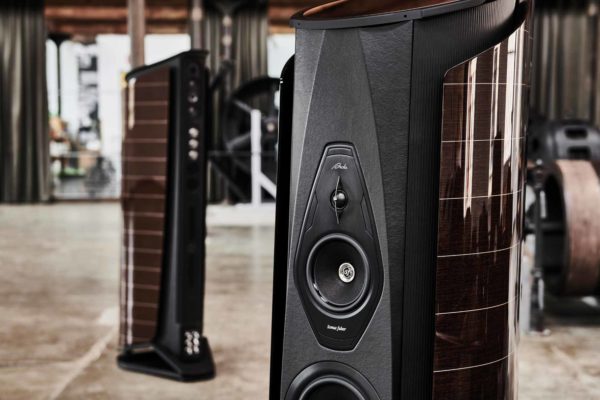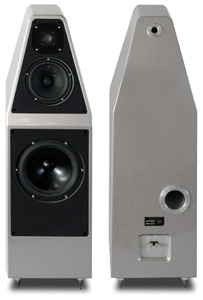Blog
Sneaking Up On Perfection
 REL Reference products—and at the pinnacle the Reference Line Arrays of three units per side stacked vertically– are a bit like supercars and the customers reading up on these, fall into one of two categories. Those lucky ones that have the means to legitimately consider their purchase and hang on every detail trying to glean if this is the solution to the missing joy and thrill in their systems, and the rest of us who live vicariously through tales of these exploits or a gifted reviewer’s descriptive journey through the world of the uber high end.
REL Reference products—and at the pinnacle the Reference Line Arrays of three units per side stacked vertically– are a bit like supercars and the customers reading up on these, fall into one of two categories. Those lucky ones that have the means to legitimately consider their purchase and hang on every detail trying to glean if this is the solution to the missing joy and thrill in their systems, and the rest of us who live vicariously through tales of these exploits or a gifted reviewer’s descriptive journey through the world of the uber high end.
But I would submit there are that will read this with a keen eye, those that are willing to build a system over time and those that are willing to assemble a system using product that is Reference quality but not necessarily at the very top of the product line. Regular readers know that we advocate for enjoying the journey; that sometimes building to an epic, final conclusion to a portion of a lifelong system build is the satisfaction that comes from savoring and understanding the improvements at every step along the way. So it is that for many a Reference Line Array (RLA) is built up in stages.
Follow closely because if the edge of the art is now just out of reach, it may well be that approached in stages, perfection becomes possible. A Reference Line Array becomes a progressively possible objective when purchased in pairs.
 Just last month we helped a wonderful client in Canada realize the first portion of his dream. Blessed with a beautiful and large room with Sonus Faber Aidas and Audio Research REF 250 monoblock amps, this was a serious and seriously expensive system. Yet it lacked drama. Music took on a pallid, stiff, listless quality. In simple language, the system wasn’t all that fun or special, and while the components were of superb quality it lacked that bigness of spirit and air movement that true state of the art systems are capable of. On the other end of the dynamic scale, small intimate recordings were devoid of the cushion of air and warmth that first rate recordings, especially those miced with classic large diaphragm tube microphones, regularly supply.
Just last month we helped a wonderful client in Canada realize the first portion of his dream. Blessed with a beautiful and large room with Sonus Faber Aidas and Audio Research REF 250 monoblock amps, this was a serious and seriously expensive system. Yet it lacked drama. Music took on a pallid, stiff, listless quality. In simple language, the system wasn’t all that fun or special, and while the components were of superb quality it lacked that bigness of spirit and air movement that true state of the art systems are capable of. On the other end of the dynamic scale, small intimate recordings were devoid of the cushion of air and warmth that first rate recordings, especially those miced with classic large diaphragm tube microphones, regularly supply.
Our prescription was for an initial pair of No.25’s whose state of the art 15” drivers, powerful 1,000 watt amplifier complete with parametric equalizers that allowed us to dial-in bass below 25 Hz to stave off the room loos common in the lowest reaches while dialing out a hint of room boom that we nipped in the bud by subtle application of a one-third of a db pull down at 44 Hz. The improvement of just a pair of these delivers deep, effortless bass and impact curing the majority of what ails the system and clarifying a stable foundation finally.
What could possibly still be missing? The pistonic impactful attack of state of the art lower-middle bass that the center position in a stack provides and all the magical, almost ethereal atmospheric bass that takes a system to the stratosphere. The tiny quaking, fluttering air rarefaction that only exists in live music in a great hall or a system with Reference Line Arrays. In time, he will add pairs in stages until he has accomplished the long-term goal and enjoy the effect that each additional pair provides.
The second type is similar to the first but perhaps a little less affluent but still patient. Those souls who are stepping up “only” to a stack of G-1MKII instead of the No.25’s knowing that their room and ultimate system goals will not rise to the need of the No.25’s.
An old friend of mine is completely rebuilding his 2-channel system, taking it from a sort of power, ultra-high-end mid-Nineties system with large electrostatic speakers and expensive Goldmund electronics of the day to something smaller, more personal. Yet he won’t give up deep bass this time. And while he has the capacity to purchase almost anything within reason, he knows himself well enough to know that he favors many of the finest speakers of the first decade of the 2000’s.

After talking over a number of options, I guided him toward a pair of Wilson Sophia 2’s, a speaker overshadowed at the time by Wilson Audio’s epic success with the fabled Watt Puppies of various vintages. But knowledgeable listeners often preferred the simpler, more coherent presentation of the Sophia to that of her larger, more boisterous older brother. There’s a tidiness to the sound of Sophia that appeals and when combined with the right electronics and reference-grade subwoofers he’ll have a system that exactly suits his needs 25 years on from his more dated assemblage.
prescribed an amplifier that is legendary in its home market of England, Sugden’s A21SE which may well be the purest exemplar of textbook electronic solid state design currently available for sale. A 30-watt pure Class A transistor design that is reasonably priced, built like the proverbial brick outbuilding and dead nuts reliable. Possessed of great warmth, fluidity and musicality even very experienced listeners will be forgiven for assuming they are hearing a high current 100-watt amplifier.
To this, we’ll be feeding digits from our old friends at PS Audio care of their DirectStream DAC and matching DirectStream Transport and we’ll keep his old Goldmund Studio turntable as it still sounds wonderful many years on, although we may upgrade it by adding PS Audio’s soon-to-be-released new phono stage penned by Darren Myers which sounds like it will be a winner.
Underneath all this, we’ll be using a stack of 3-per-side G-1MKII which will work with main speakers as modest as the Sophia 2, right on up to exotic super speakers in the $60,000-100,000 range. While, at first blush, it seems like a bit of overkill, the G-1MKII are so flexible in scale of system because they’re so quick and yet with almost boundless upside. Planning ahead, I’m leaving extra performance to allow for my friend to grow beyond these speakers if, down the road, he decides to expand the scope of his system. He’ll start with a pair of G-1’s and add the remaining 4 over the next year.
So, there you have it, a couple approaches that similar customers in, perhaps, different walks of life are choosing to address the same needs by spreading out their acquisitions over time to arrive at the end goal they both desire.










